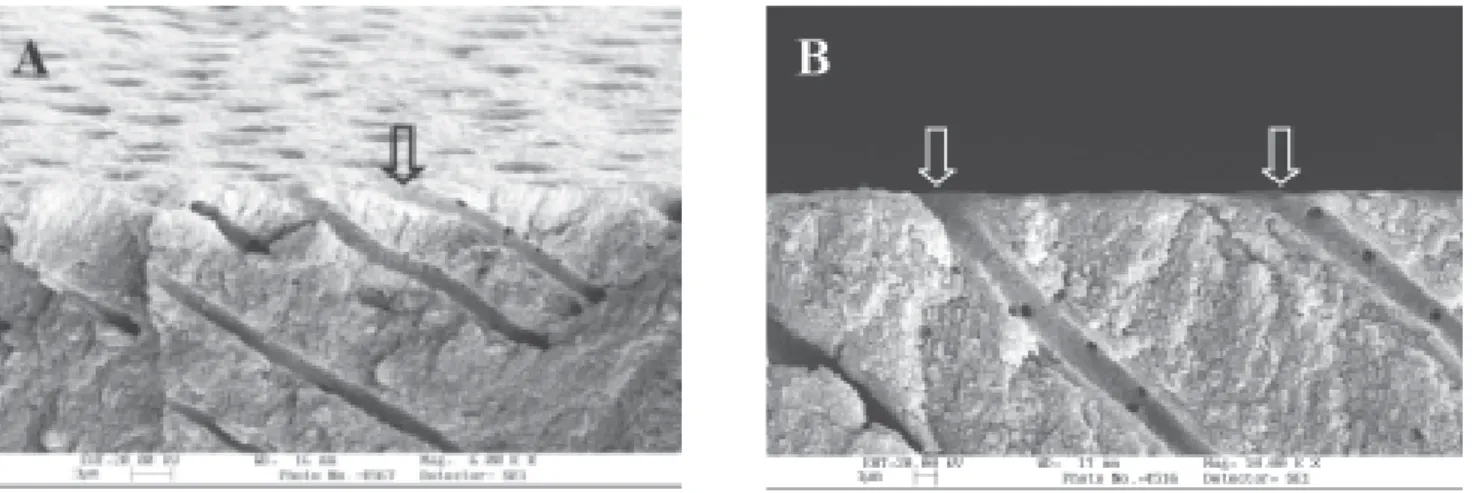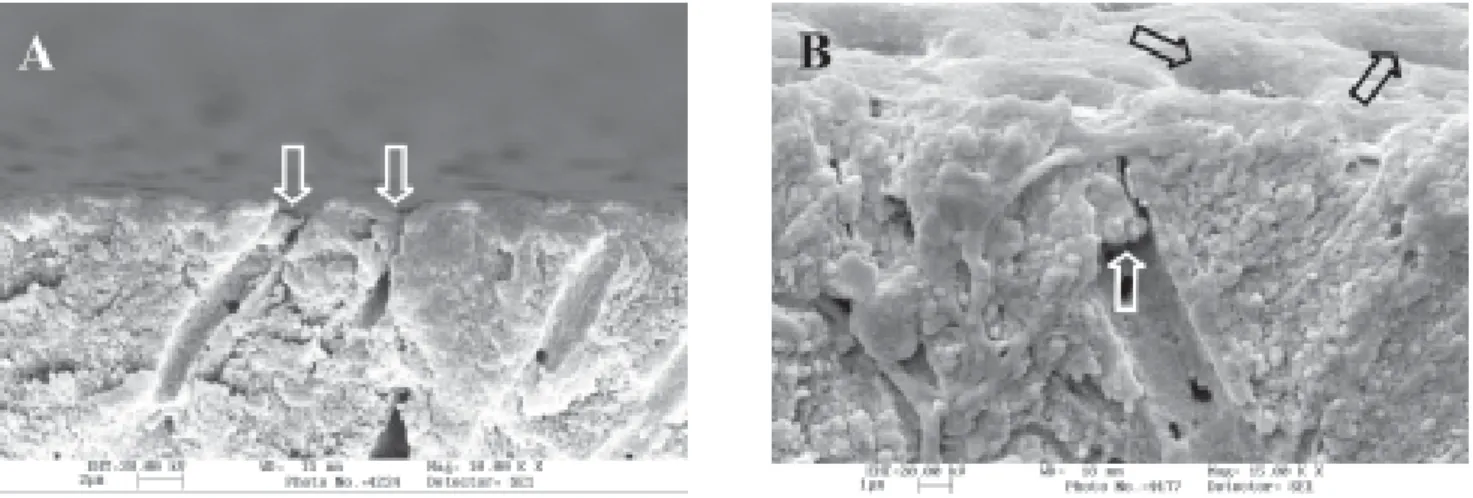J. Appl. Oral Sci. vol.12 número2
Texto
Imagem


Documentos relacionados
Abstract: This study aims to compare the in vivo effect of a desensitizing therapy associated with a restorative technique for the treatment of cervical dentin
according to each root dentin treatment. A) NaOCl/Panavia F: presence of AH Plus (red) in the dentinal tubules, without evidence of penetration of Panavia F(green); B)
The values obtained indicate that the morphology of dentinal tubules is differ- ent for both substrates, with human dentin having dentin tubules with larger diameter near the pulp
The aim of this study was to evaluate the efficacy of two desensitizing agents in the reduction of dentin hypersensitivity in a randomized, double-blind, split- mouth
A: Endofill: presence of sealer in dentin walls and tubules (green) and few tags of adhesive (red), B: AH Plus: note residues of filling material in dentinal tubules (green)
Conclusion: Aging of rats showed a significant reduction in the number of round spermatids and the area of the seminiferous tubules, more pronounced in the rats at 18 and 24 months
Effect of desensitizing agents on the hydraulic conductance of human dentin subjected to different surface pre-treatments: an in vit ro study. Spectroscopic investigation of
dentin tubules in the apical section using AH Plus; (c) partially obturated dentin tubules in the apical region using the EndoSequence BC sealer; (d) superior sealing in the